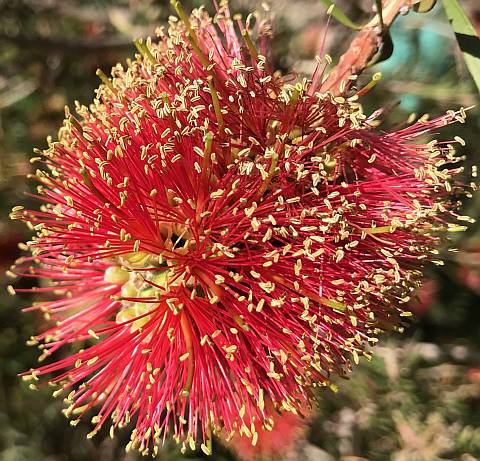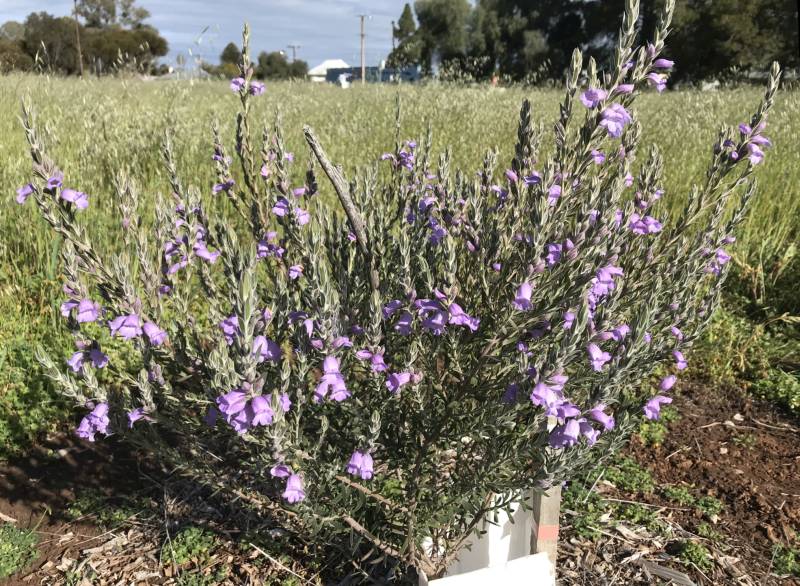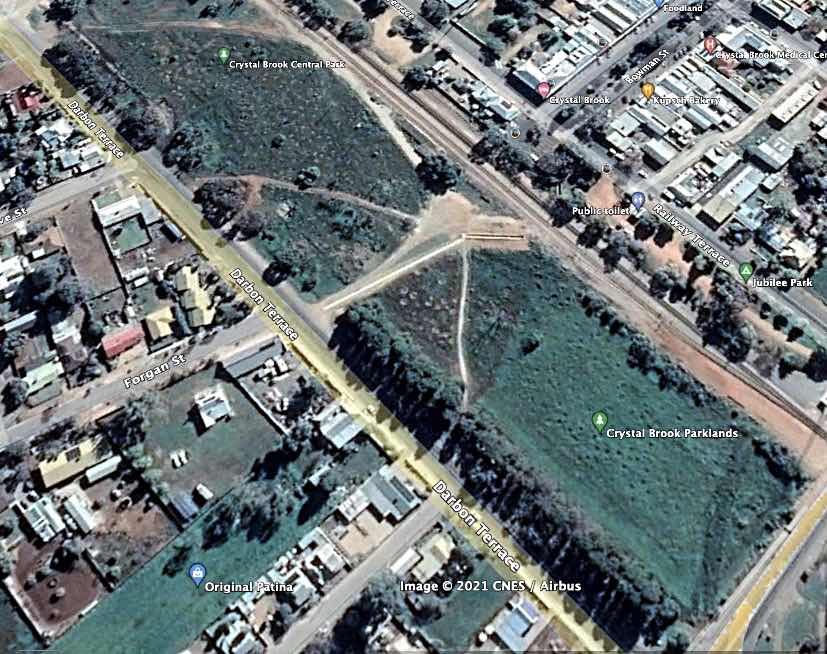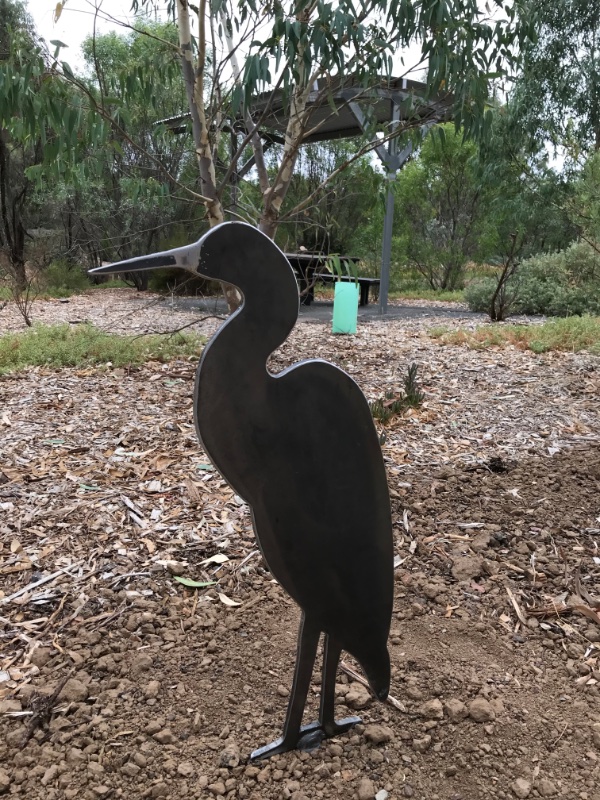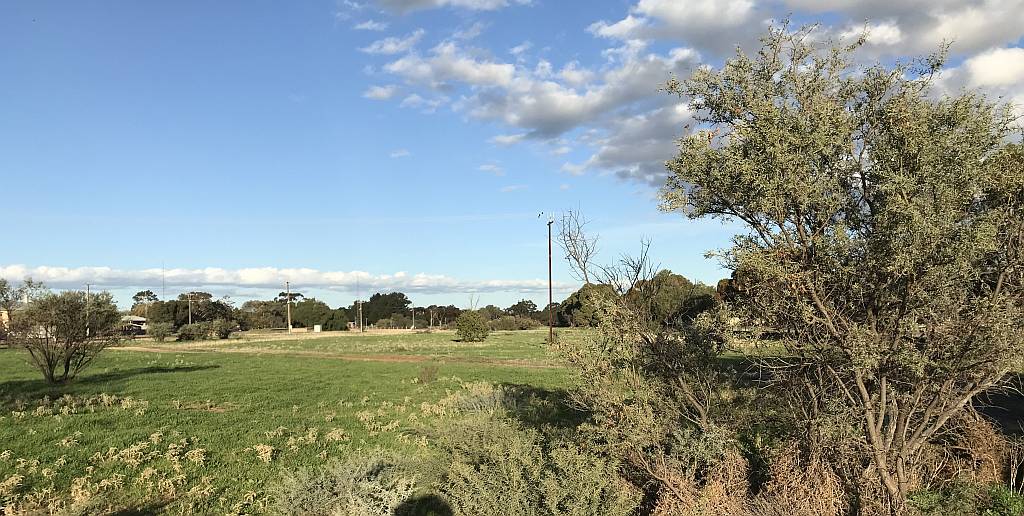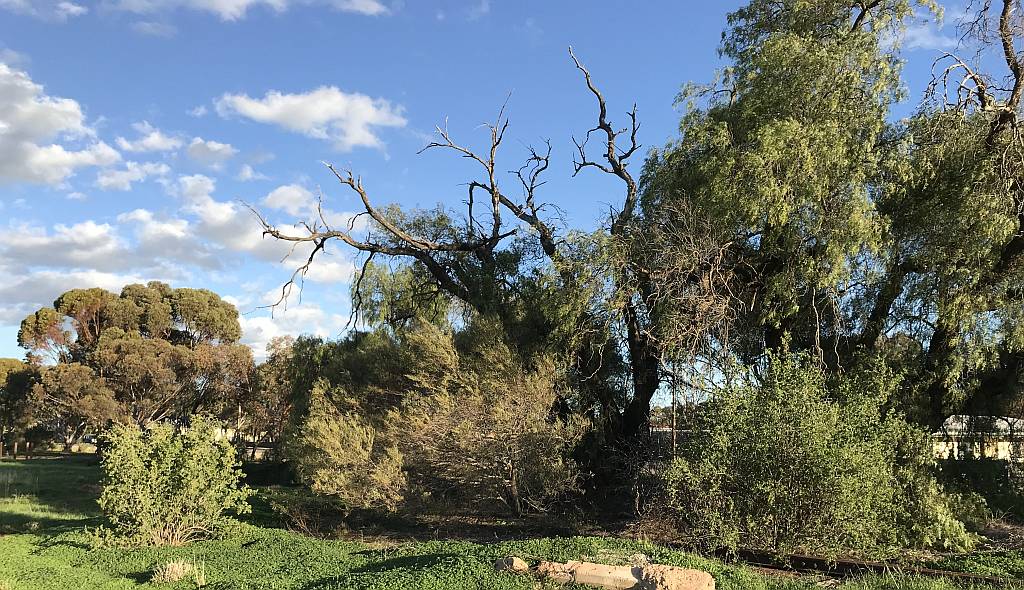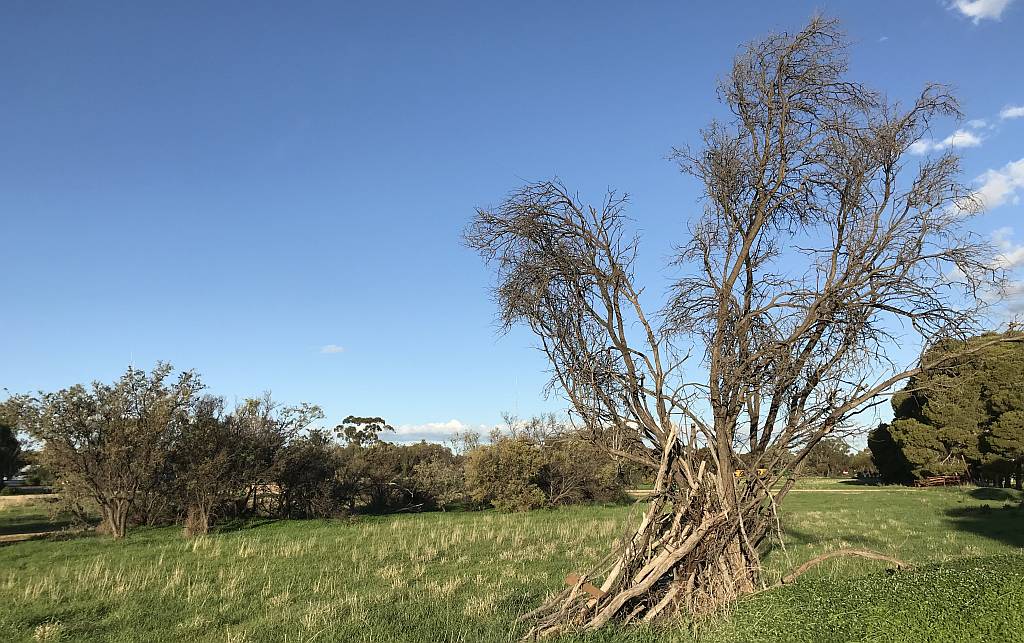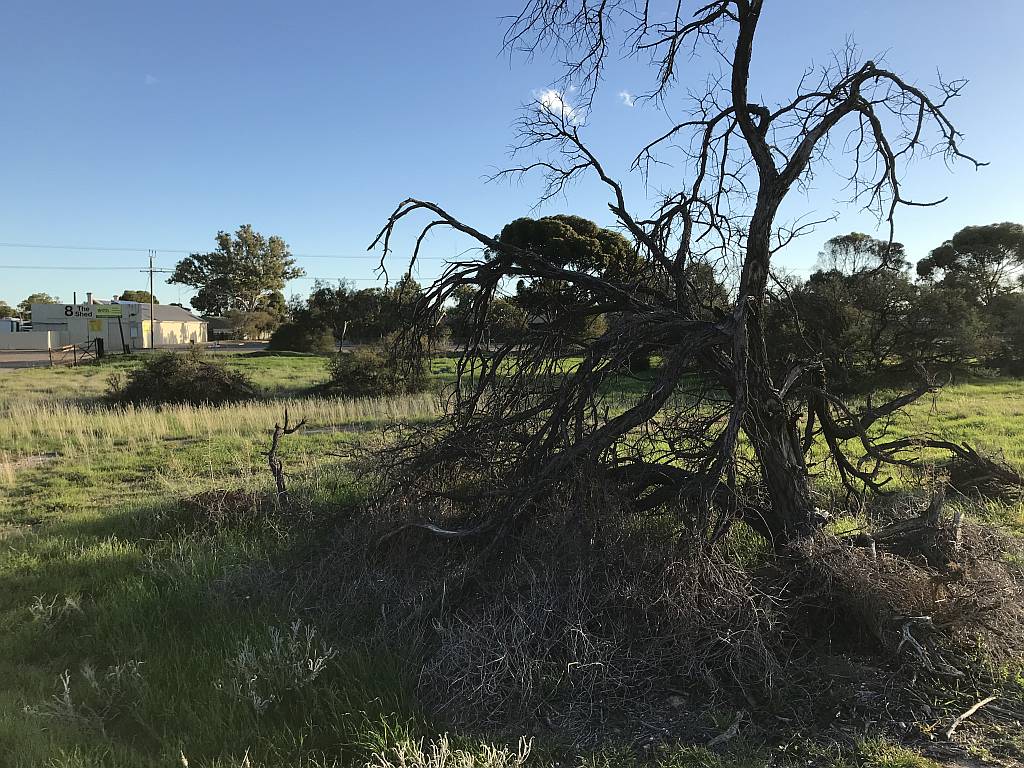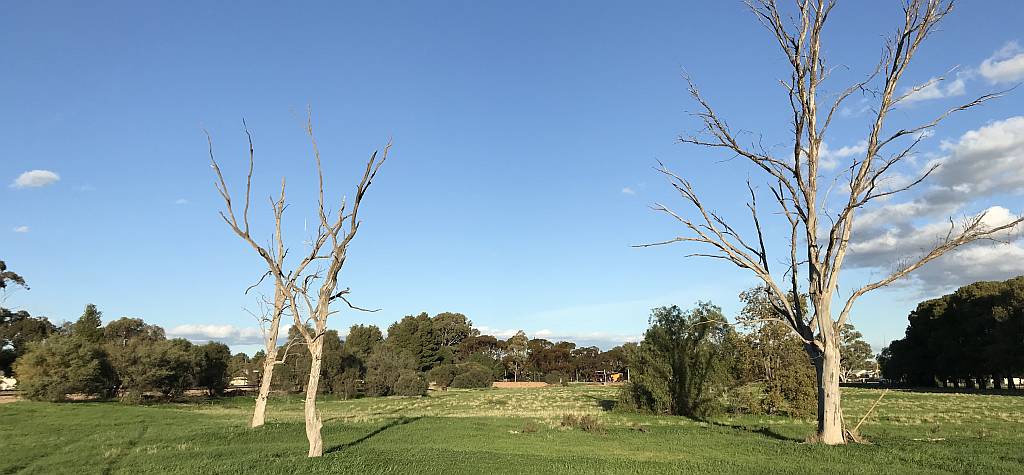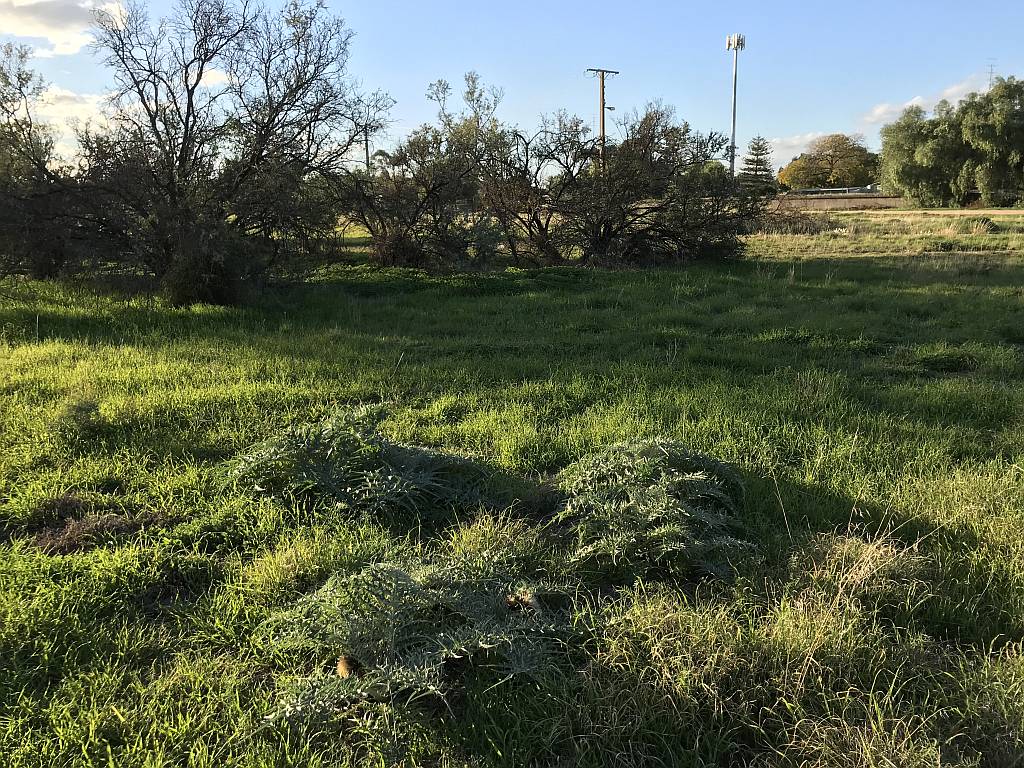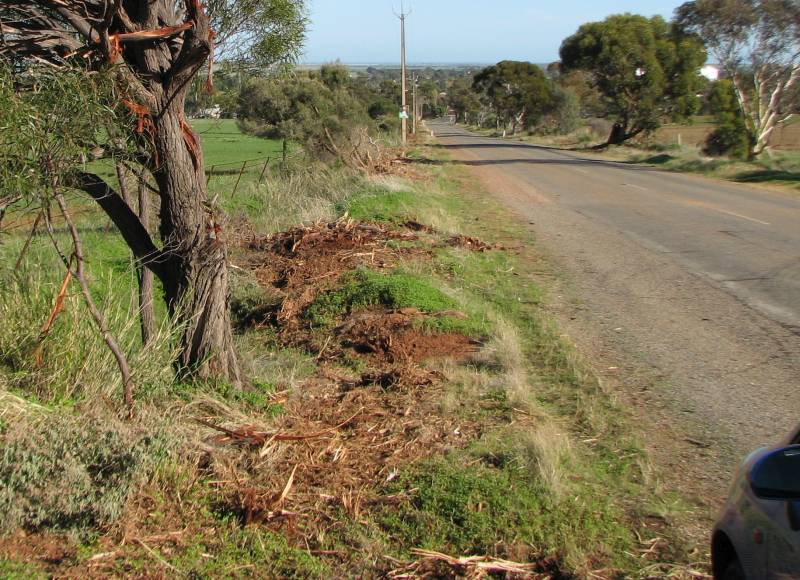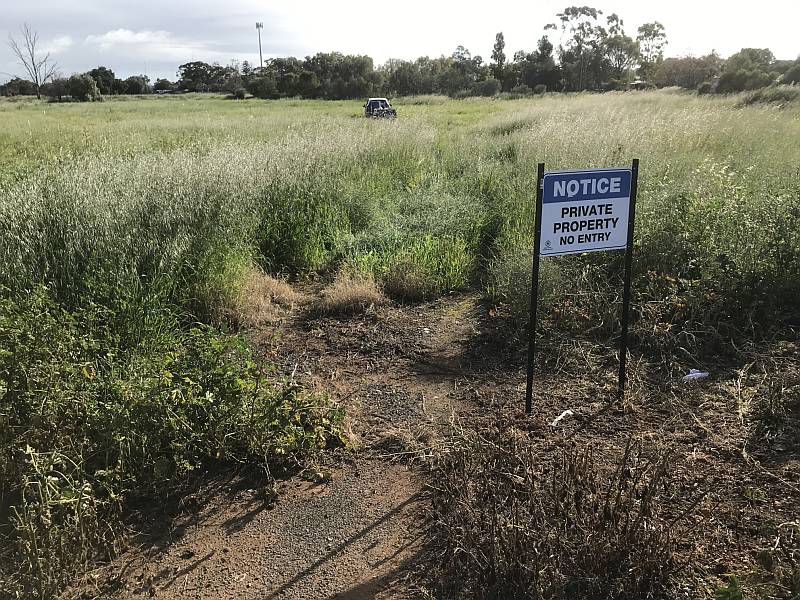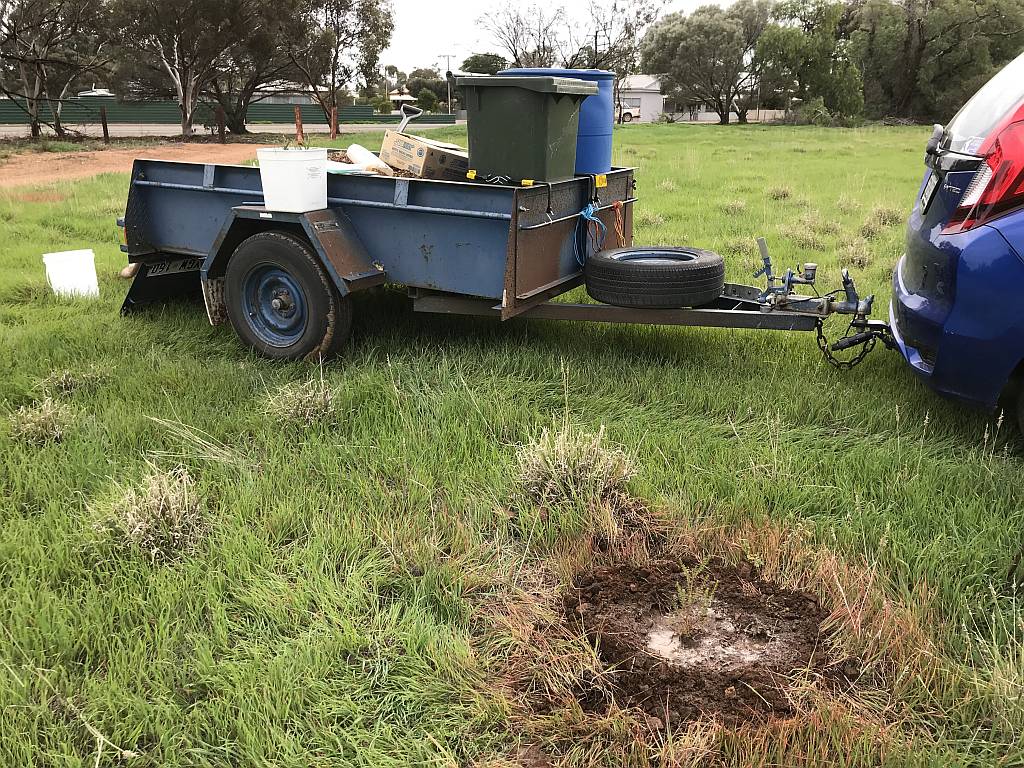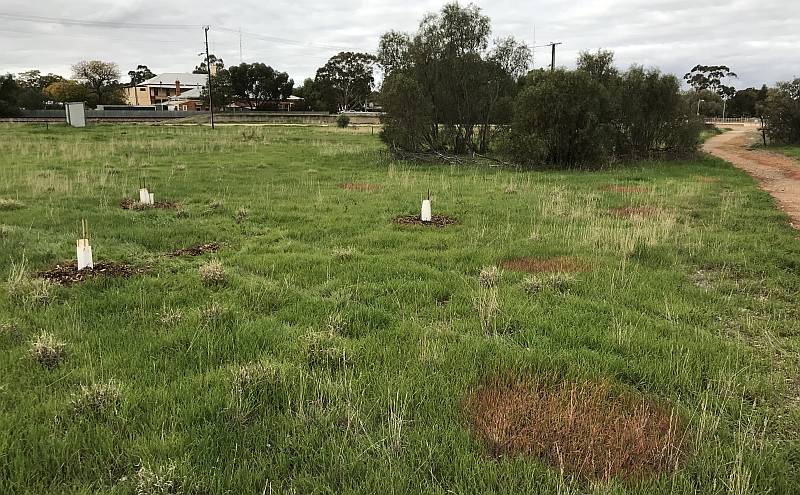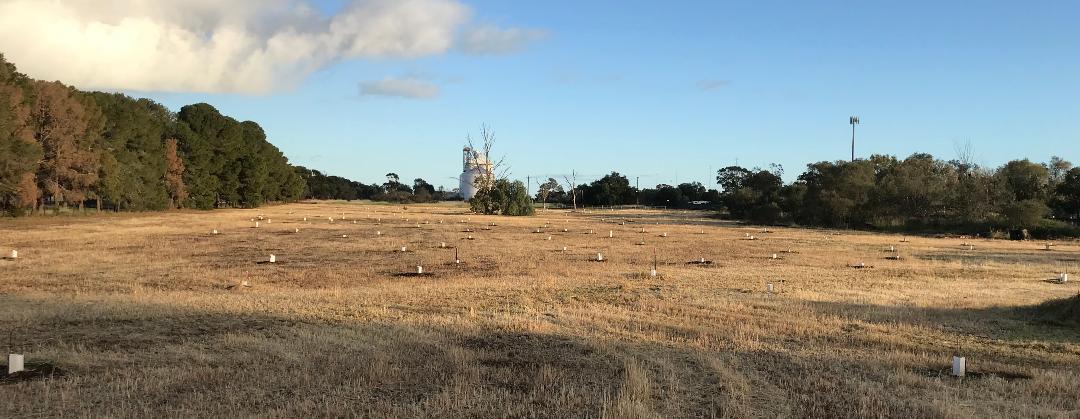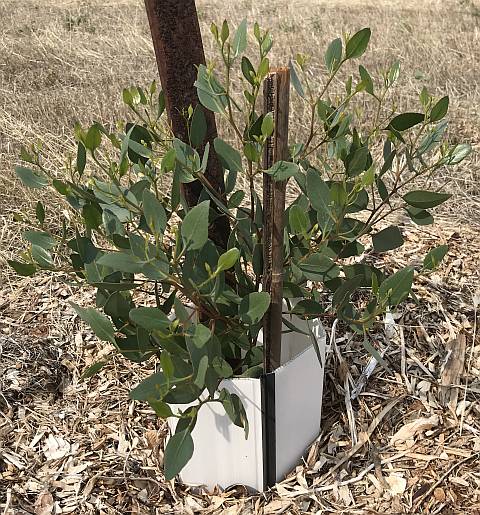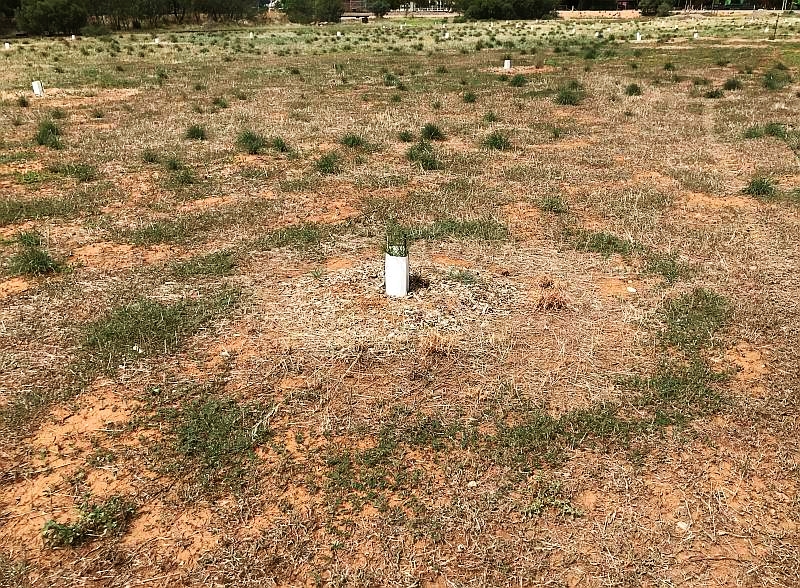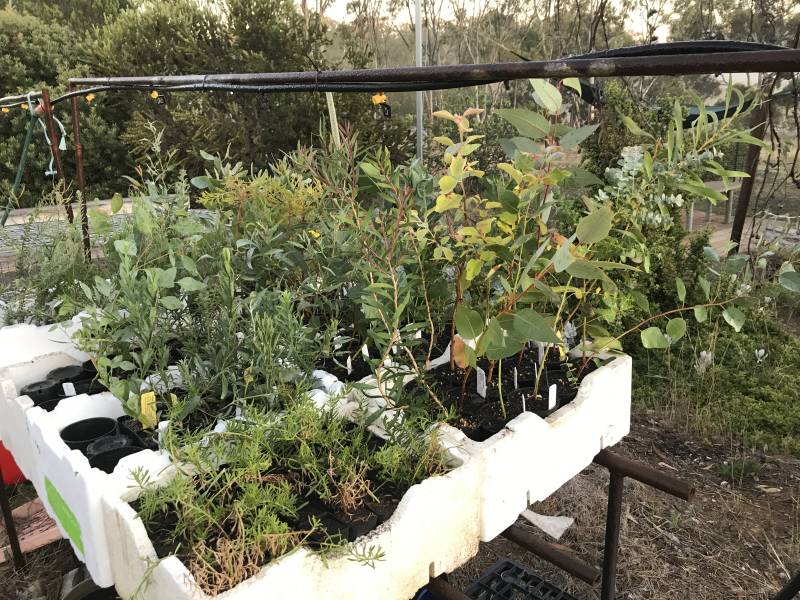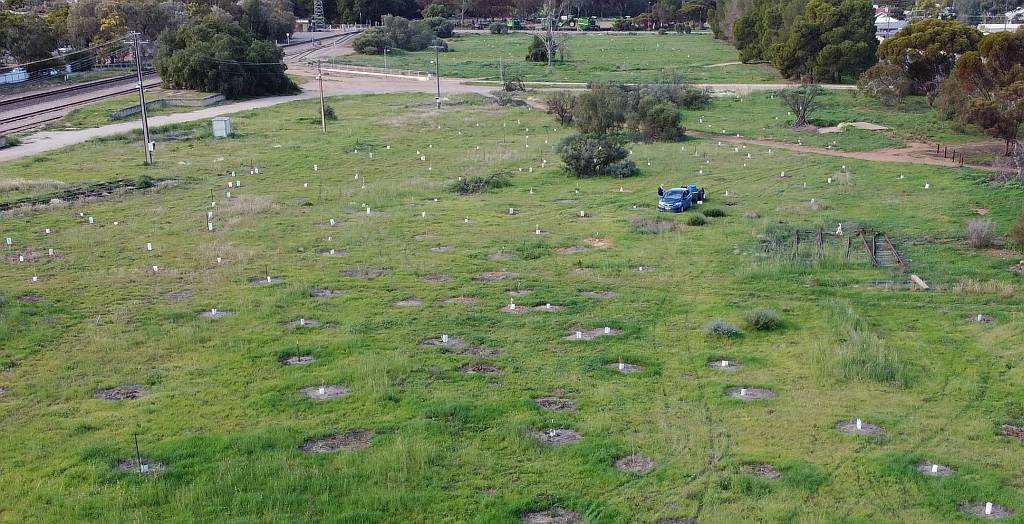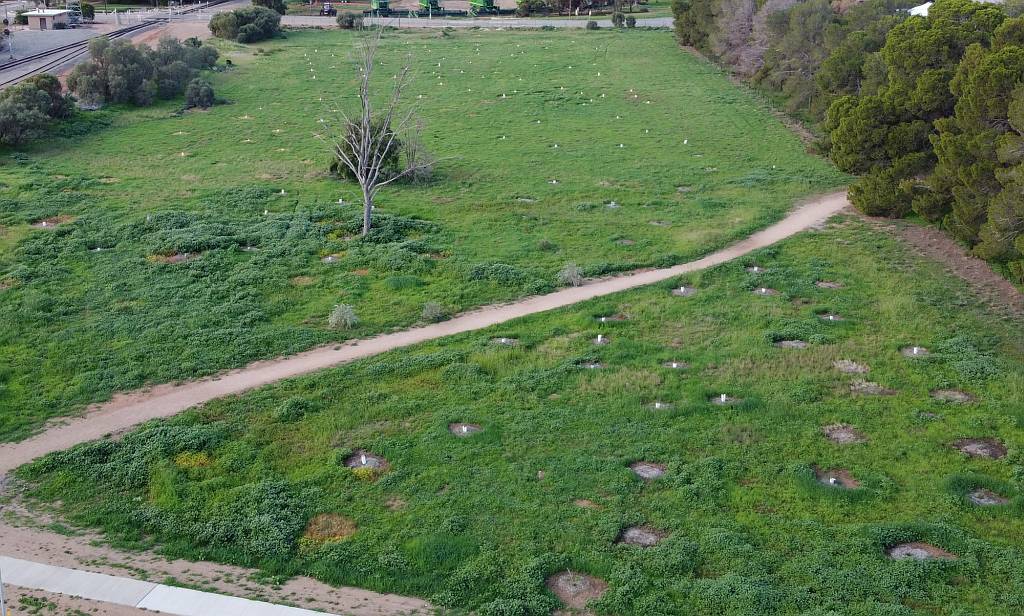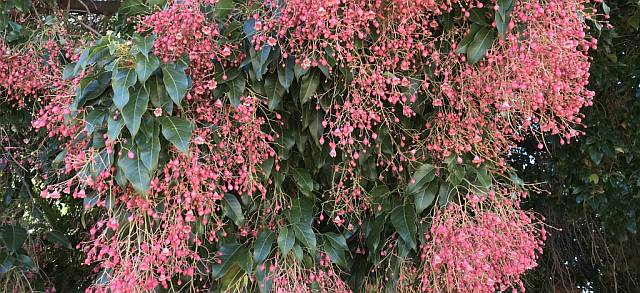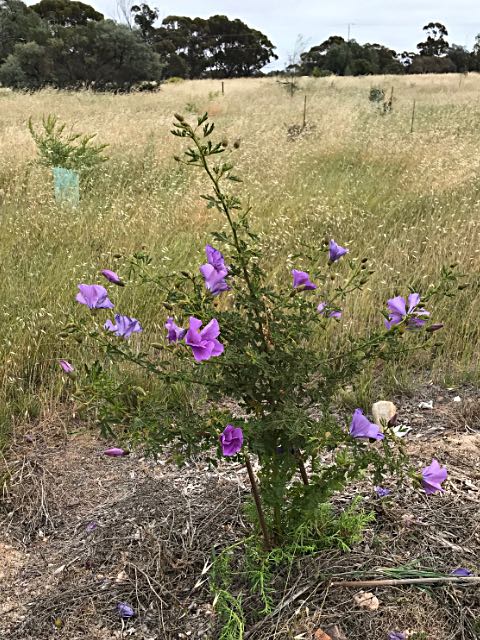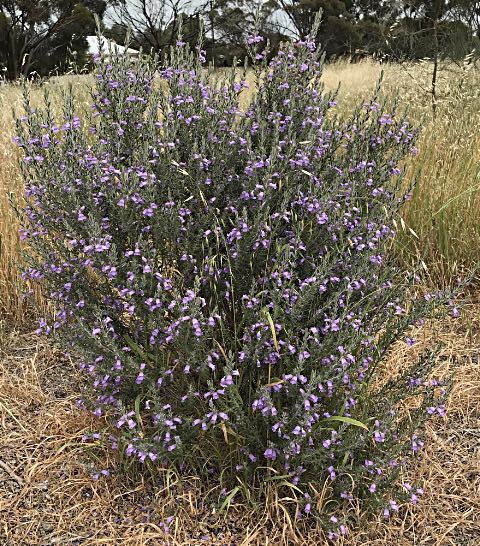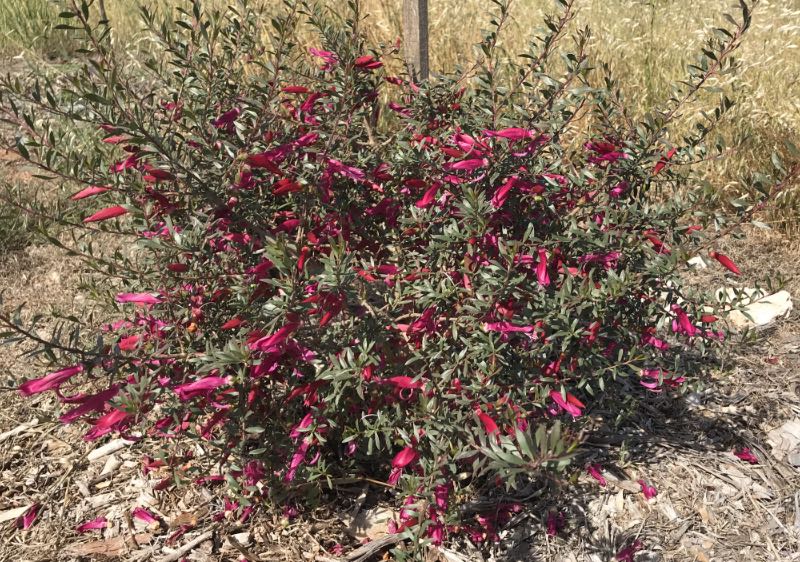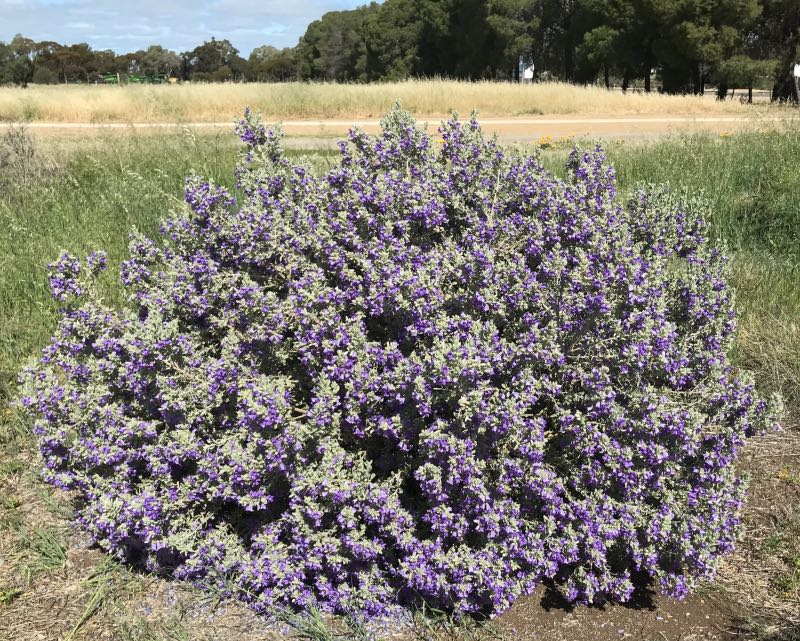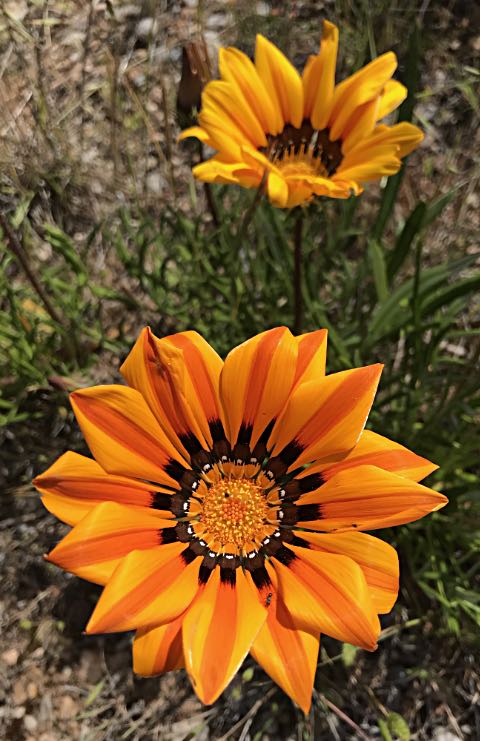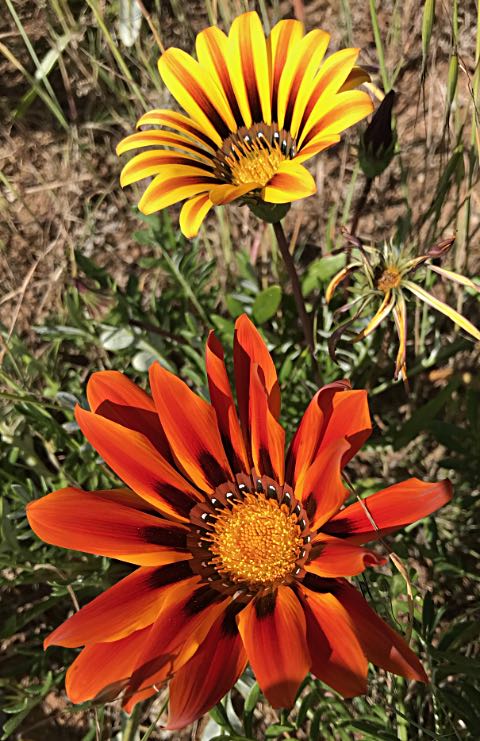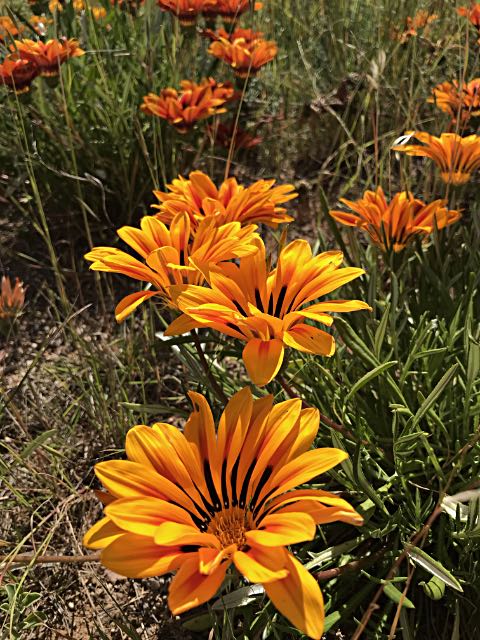Gazanias are not Australian natives, and I haven't planted them in Central Park, but they are beautiful flowers, especially when you look closely at them.
The weeds were slashed around 12-15th of October and, as previously, Danny Millard did an excellent job of it.
On 2021/10/15 I emailed Dan van Holst Pellekaan who will be the state member for the Crystal Brook area should he win the coming election in which he will contest the seat against Geoff Brock. I asked if, on the assumption he won the seat of Stuart in the election, if he would support the people of Crystal Brook in the improvement of Central Park. Someone in Dan's office replied that he would call in and have a look at the park when passing through Crystal Brook.
Due to circumstances that I will not go into here my wife Denece and I decided we needed to move to a place where we would have access to good and effective public transport and be close to our daughter and her family. We will be leaving Crystal Brook and going to Mandurah in Western Australia in the next few months.
Most of the tree guards have been removed; many more will be removed before we leave. The trees and shrubs will be quite capable of looking after themselves. Perhaps someone else will do a bit to look after Central Park in the future?
I write this on the 20
th. There has now been nearly 100mm of rain in Crystal Brook for the month, many times the average November rainfall and it is raining as I write. The rain will be great for the trees and shrubs, but will also bring up hoards of summer weeds. I intend to do some spraying in the coming few weeks.
| |
Near the centre of the park, looking NW
|
|---|
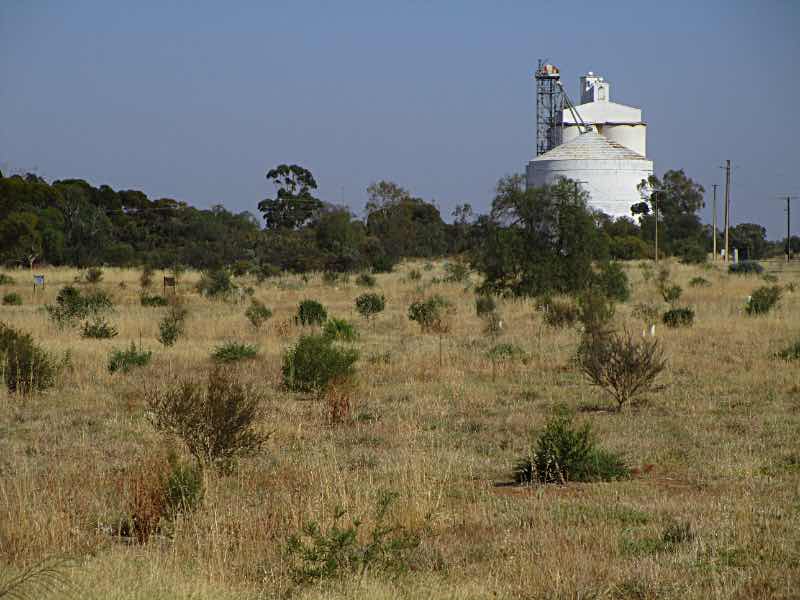
| The two 'keep out' signs are visible on the left
Photo Canon Ixus 190, 2022/01/12
|
|
|
|
|
Looking NW from the southeastern end of the park
|
|---|
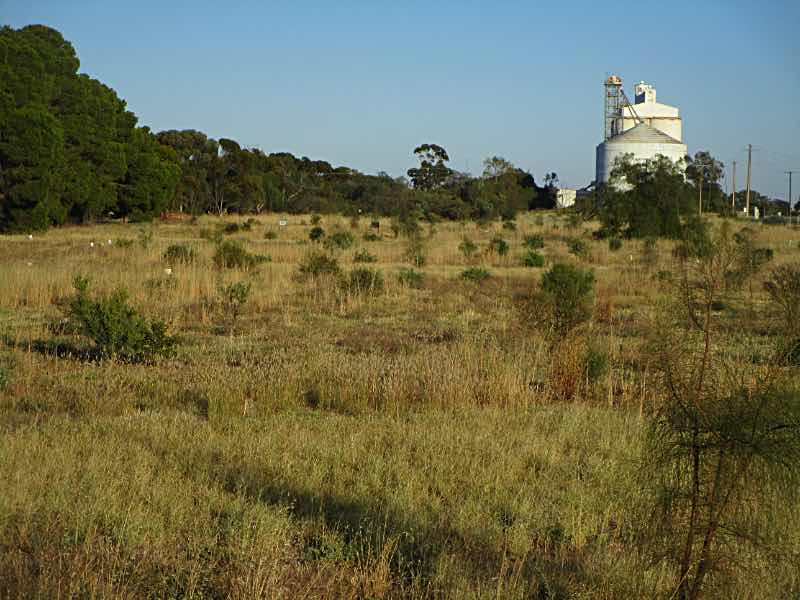
| Photo Canon Ixus 190, 2022/01/03
| |
My wife, Monty and I are moving to Erskine (a Mandurah suburb) in Western Australia soon.
I took the (pretty ordinary) photos on the right to have a record of at least a couple of parts of Central Park as it was around the time that we left Crystal Brook.
Both images have high definition versions that can be viewed if you click on the photos - use back arrow to return.
The second photo was taken from the main road near the railway crossing.
(As mentioned
elsewhere on this page I, David Clarke, will be leaving Crystal Brook around the end of 2021, so what happens in the future will depend on others.)
In the longer term I'd like to plant the following:
- Acacia pendula, weeping myall, there are quite a few beautiful specimens around CB;
- Alyogyne huegelii, native hibiscus, with a show of large blue flowers that last a long time, proven to do well at
Bowman Park.
| |
Food plants
In the Spring of 2021 I may plant a few food plants that require minimal attention. Sweet potatoes and tomatoes are a couple of possibilities.
All water will have to come from natural rainfall or be carted in.
|
|
- Brachychiton acerifolius, Illawarra Flame Tree (there is a beautiful specimen of this in the CB Showgrounds and a photo of it in the November 2020 section on this page); for more information on the species see Climate Watch;
- Callistemon species, including Gawler hybrid;
- Eremophila species;
- Eucalyptus caesia, which seems to have been very little grown in Crystal Brook but grows well on my property at Armagh. It has a beautiful form and large bright red flowers. As of October 2020 there are a few specimens in the park doing very well (at least one was destroyed by vandals) and I am growing about 40 more from seed;
- E. erythrocorys, Red-capped gum, which, as the name implies, have large bright red caps on the gum-nuts, as well as large bright yellow flowers;
- E. woodwardii has large yellow flowers and has also been proven to do well in and around Crystal Brook;
- Grevillea species including robusta;
- Hymenosporum flavum, native frangipani;
- Templetonia retusa, cocky's tongue;
- Xanthorrhoea quadrangulata, yakka. As of November 2020 some have been planted, more will be planted.
All these species should tolerate the highly alkaline soils of Central Park.
The cost of the plants will be significant; up to October 2020 I have spent close to two thousand dollars on seedlings and equipment for the Central Park and Bowman Park projects.
I am continually growing many plants from either cuttings or seeds for the park.
The correspondence is in chronological order.
2019/09/12
I wrote to Stephan Knoll, Minister of Planning, Transport and Infrastructure (DPTI) on the matter and received the following on 2019/09/12:
"The Department of Planning, Transport and Infrastructure (the department)
appreciates your interest in improving the area and generally supports
beautification through the appropriate engagement and approval processes.
Due to historical site practices within railyards, various herbicides and chemicals are likely to have been used on the land. Therefore, soil should not be disturbed without appropriate assessments being undertaken to inform the processes to manage safe and successful planting onsite.
In order to properly explore the option of planting trees on Lot 1 Darbon Terrace, the recommended course of action would be to undertake an environmental
assessment to determine safety to human and plant health of prevailing soil
conditions. By way of example, the use of Personal Protective Equipment whilst
planting may be a potential recommendation of such a report.
Your enquiry has been forwarded to the department's Manager Portfolio Assets Rail, Mr Peter Kapiris, who will contact you in due course to discuss the possibility of beautifying this location and the potential costs and appropriate process involved."
The only indication that I could see of phytotoxicity (toxicity affecting plants) was in the three dead Eucalypts, mentioned
elsewhere on this page.
The Department had previously been contacted by the Crystal Brook Community Committee who had been told that an environmental assessment would cost them $15,000 dollars; money that was not available.
Other railway land in the Mid North has been returned to native vegetation without problems from toxins.
By later in September I'd had several communications with Mr Kapiris and he had been quite cooperative.
| |
Pirie Regional Council
I inquired by email of the Pirie Regional Council on 2019/12/04.
By 10th December I had not received a reply.
On that date I sent another email to the Council's general address and to Mayor Leon Stephens' email address asking again for Council's stance on the revegetation and the use of the land.
My impression is that Council simply wants no part in improving the land.
|
|
I emailed Peter Kapiris of the Department of Planning, Transport and Infrastructure (DPTI) on 2019/12/04:
"G'day again Peter;
Most of the trees I've planted on the land near the railway are doing well. I've just about finished another round of watering. A few have died, rather more have been pulled out by a vandal, but most are fine.
I see that one of the paths from the railway underpass is being concreted. I inquired at the Crystal Brook office of the Pirie Regional Council for details of any plan, but the lady there couldn't tell me anything. (At least one of the trucks on site had Council's logo on its door.)
A neighbour told me that he had heard that the land is to be entirely fenced. This concerns me. I hope that whoever is involved is not planning to exclude the people of Crystal Brook from what should rightly be their land.
Can you tell me anything about any plans that DPTI has regarding the immediate future of the land please?
Regards, Dave Clarke"
On 2019/12/09 I received the following reply:
"Hello David
My colleague Rachael Hryciuk is assisting me with this enquiry and, we will revert to you in due course.
As previously advised, you must not access the rail reserve without a permit issued by the department.
Regards, Peter"
Mr Kapiris rang the next day and told me that he knew of no plan to fence the land.
Email to new minister, Corey Wingard, 2020/08/05
The previous minister, Stephan Knoll, had resigned his position over questions about improper expense claims, so I sent a polite email to his successor, hoping for a more cooperative response.
By 2020/08/25 I had not received a response other than the automatic one saying that my email had been received. I resent the same message on 2020/08/25.
Reply from Minister Wingard
Following a reminder I eventually received a reply from Minister Wingard on 2020/09/16. It included the following:
“I am advised that DIT [Department of Infrastructure and Transport] has an ongoing vegetation control project with a maintenance team that follows a scheduled program throughout the year. The schedule for cyclic maintenance can vary as it is dependent on vegetation species and their different rates of growth, as well as seasonal rainfalls.”
Their “management team” consists of one contractor who slashes the area once a year. The “schedule for cyclic maintenance” consists of an annual slashing. They do absolutely nothing else.
One would have to wonder if Minister Wingard has any knowledge at all about the condition and lack of care of Central Park by his department.
I was disappointed in the Advertiser article of 2020/07/03 headlined "Health risk ends tree dream".
First; I told the reporter quite clearly that I was going to continue with the work of improving the land.
Second; in the year that I have been corresponding with them neither Council nor the Department of Planning, Transport and Infrastructure (DPTI) have ever shown me, or anyone I know, evidence that the land is contaminated, or that there is any health risk at all in using it as a park. I have written on the question of contamination elsewhere on this page.
The story also had some coverage on Channel 10 TV. The headline was "Abandoned Council Land". It is not council land, it is controlled by Department of Planning, Transport and Infrastructure.
Both the Port Pirie Regional Council and the Department of Planning, Transport and Infrastructure (DPTI) have used 'contamination' and 'health risk' as justification for not allowing the people of Crystal Brook to change the wasteland into a park for the benefit of the people of the region.
| |
Soil testing
In April 2021 soil testing was carried out. It seems that no contamination was found.
|
|
|
|
|
Cropping of the land
The southeastern half of the land was cropped for a number of years before about 2012. If there was any contamination in the soil how could this have been permitted?
Surely if there was any contamination in the soil eating cereal grown on the land (or even feeding the grain to domestic animals) would be a far greater health risk than having the land used as a park.
| |
Neither Council nor DPTI have ever shown me, or anyone I know,
evidence that the land is contaminated. Any such contamination would come from the railway line (and possibly a sheep dip that may have been on the land at one time), but the closest of the present plantings are 20 metres from the railway. In more than a year of discussions with DPTI and Council neither have seen fit to provide me with any evidence that the land I am planting is contaminated; I strongly suspect that neither have any specific evidence of contamination.
If the land was seriously contaminated the weeds, trees and shrubs on the land would not grow as healthily and vigorously as they do. It seems clear that the contamination myth is no more than a convenient excuse for the authorities to do nothing to improve the land.
My impression is that Council uses the 'contamination' and mythical 'health risk' as an excuse to not spend any money on the land.
I suspect that similarly, DPTI don't want to go to the expense of testing for contamination; they find it simpler to just obstruct any effort by the local people to improve the land.
In the absence of any evidence of contamination from either Council or DPTI I did my own research. The railway line, adjacent to the land I'm revegetating may have some residual arsenical herbicide contamination, as do all railway lines in South Australia, and probably Australia, including those many that are used for walking and cycling trails; see
Researchgate.
There is also evidence of some lead and zinc contamination "immediately adjacent to train lines" that were or are used to transport ore from Broken Hill to Port Pirie. (See
Lead and zinc dust deposition from ore trains characterised using lead isotopic compositions).
Improving Central Park will not endanger anyone's health, if anything it will reduce health risk by stabilising the area
First; my plantings are from 20 to 100 metres from the railway line, so not in the area where contamination is most likely to be found.
Second; my plantings will minimally disturb the soil and I am immediately covering the very small disturbed area with mulch, so there can be no dust.
Third; my plantings will stabilise the soil, so reducing any risk of possibly contaminated dust blowing from the area.
Finally; I note that the ground adjacent to the railway tends to be bare, so if the soil is contaminated then any contaminant is far more likely to come from this area (higher level of contamination, more mobile soil due to raised dust) than in the area of plantings.
If there is contamination and a health risk associated with the railway line...
If there is contamination then dust blowing from contaminated bare ground could produce a health risk.
(There will be no dust from Central Park.)
If there is contamination:
- Why do the authorities allow bare ground near the railway line in the centre of Crystal Brook?
- Why do the authorities allow bare ground on the access tracks that parallel most of the railway lines in the state?
- Considering this apparent carelessness on the part of the authorities, why are there no reported resulting health problems?
All in all it is hard to see that if any contamination exists in Crystal Brook's Central Park the improvement of the land by converting it to a park will not result in any health risk to anybody.
| |
| Port Pirie's Memorial Park
|
|---|

| |
The two photos on the right of Port Pirie's Memorial Park, which is as much in the centre of Port Pirie as Central Park is in the centre of Crystal Brook.
Memorial Park gets a lot of attention from the Port Pirie Regional Council, Crystal Brook's Central Park gets none.
Crystal Brook's Central Park could be just as nice to walk around in as is Memorial Park in Port Pirie.
What is needed to make Crystal Brook's Central Park as nice as Port Pirie's Memorial Park?
A little cooperation from the state government and regional council as well as some voluntary work.
| |
| Port Pirie's Memorial Park
|
|---|
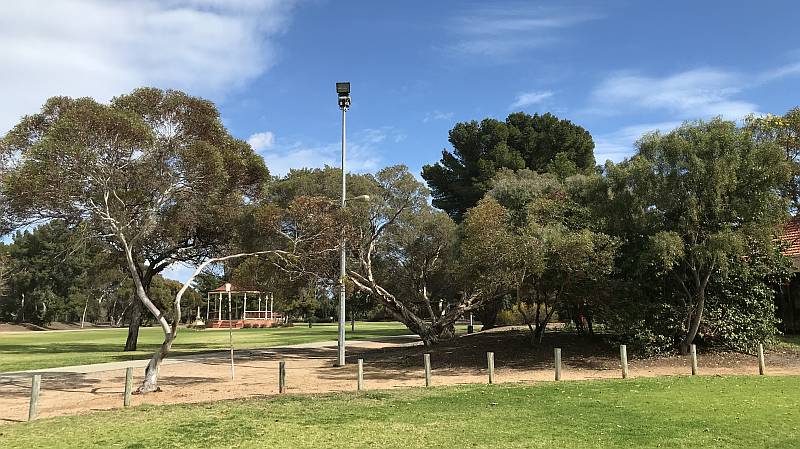
| |
So long as we had some cooperation (rather than obstruction) from the state government and a little support from Port Pirie Regional Council we could gradually get there with voluntary work.
Have a look at
Lions Gleeson Wetlands in Clare for example. Sure the original landscaping was done by the council, but the great bulk of the work in the six years since then has been done by a handful of volunteers and some grants.
We could achieve as much in Crystal Brook if a few of us wanted to try.
Guerrilla gardening, as defined in
Wikipedia:
"is the act of gardening on land that the gardeners do not have the legal rights to cultivate, such as abandoned sites, areas that are not being cared for, or private property. It encompasses a diverse range of people and motivations, ranging from gardeners who spill over their legal boundaries to gardeners with political influences who seek to provoke change by using guerrilla gardening as a form of protest or direct action."
In the context of Crystal Brook the Central Park work is the extension of work done by Roly Nicholls, Col Matheson, Ken Grossman, myself and others revegetating roadsides years ago.
That work had the blessing of the local council (Crystal Brook had its own council in those years, now Crystal Brook is in the Port Pirie Regional Council area), I recall that Council loaned me a watering trailer when I needed it.
Like the Central Park project, the revegetation was done on Crown Land.
I should also specifically recognise here the more recent planting that Lorraine Saunders has done around Crystal Brook.
| |
This section added
2021/02/08
|
|
To the present time the cost of seedlings has been $1612. Hardware, which is also used on my property and at Gleeson Wetlands, cost $893.
I have not attempted to cost material I had before starting the Central Park project, the use of my cars and trailer, water, nor my own time.
